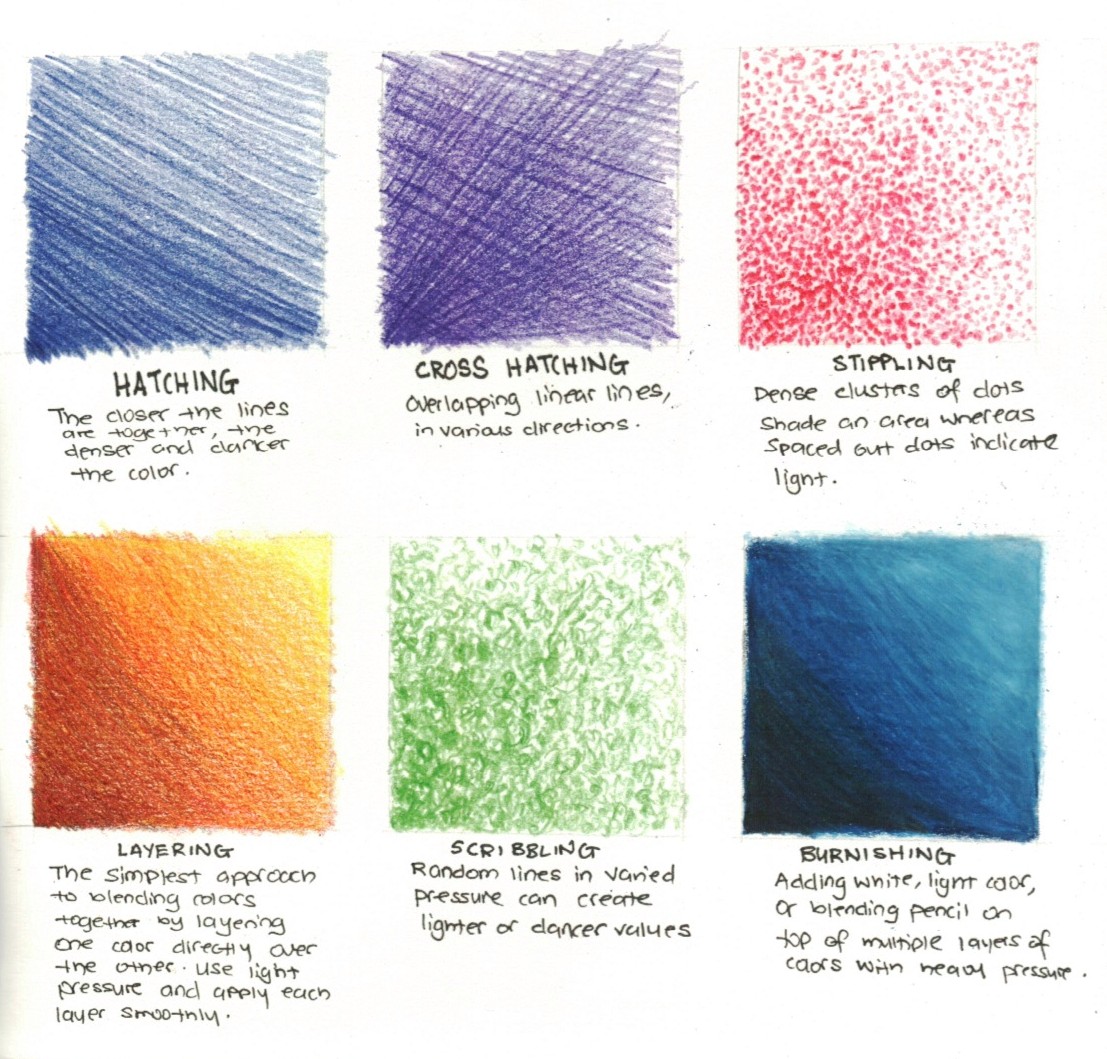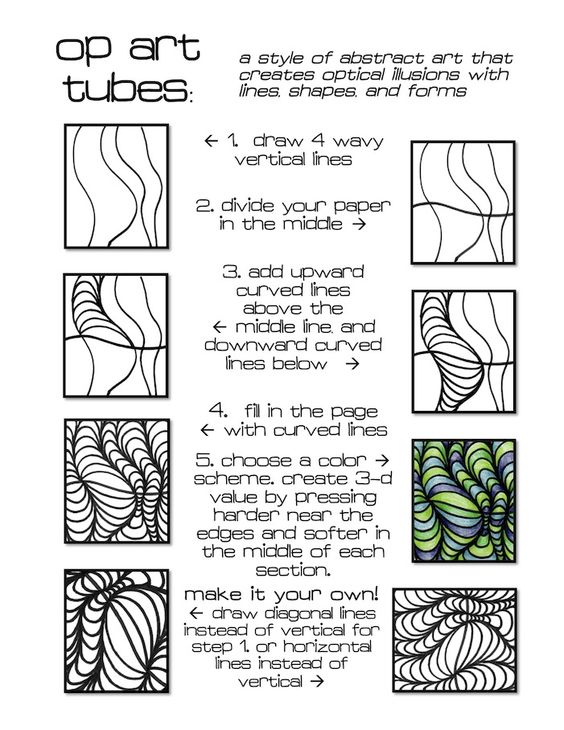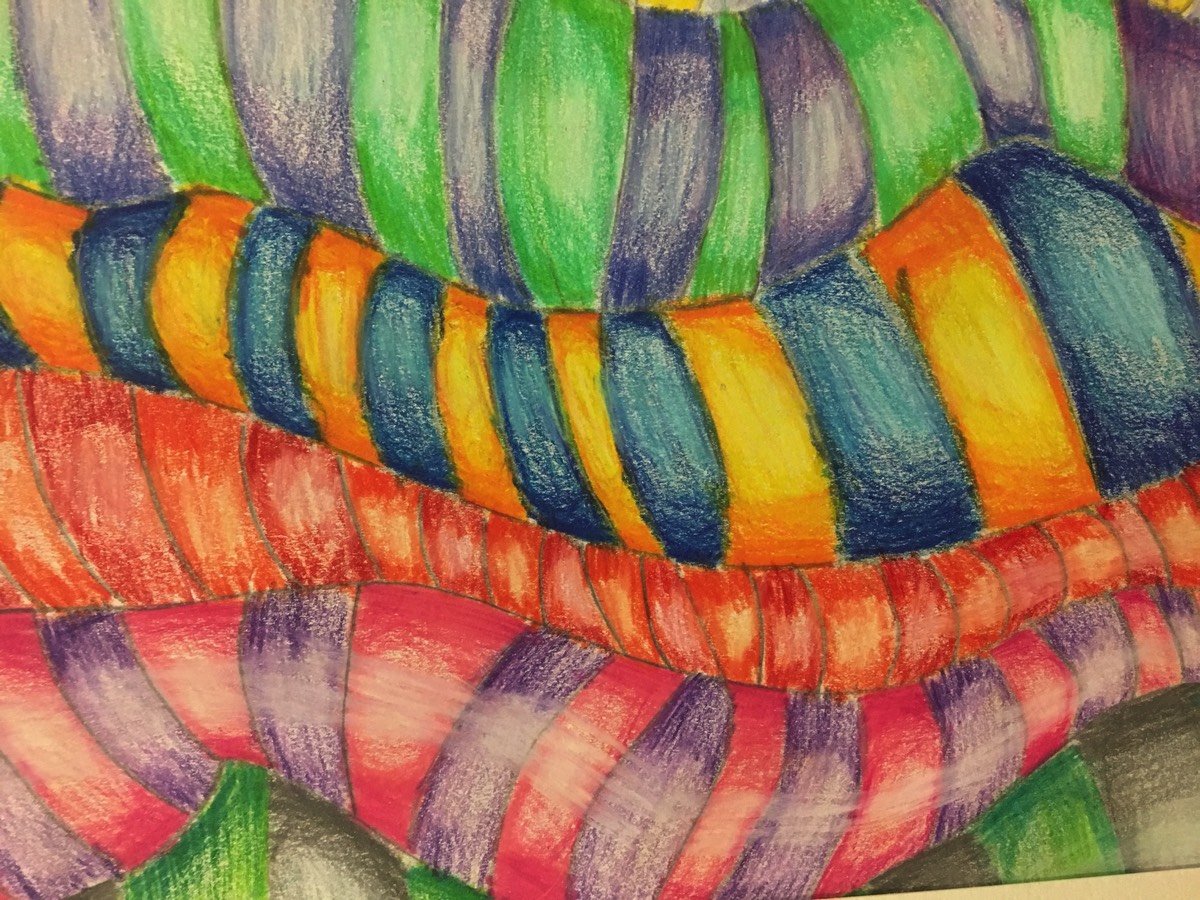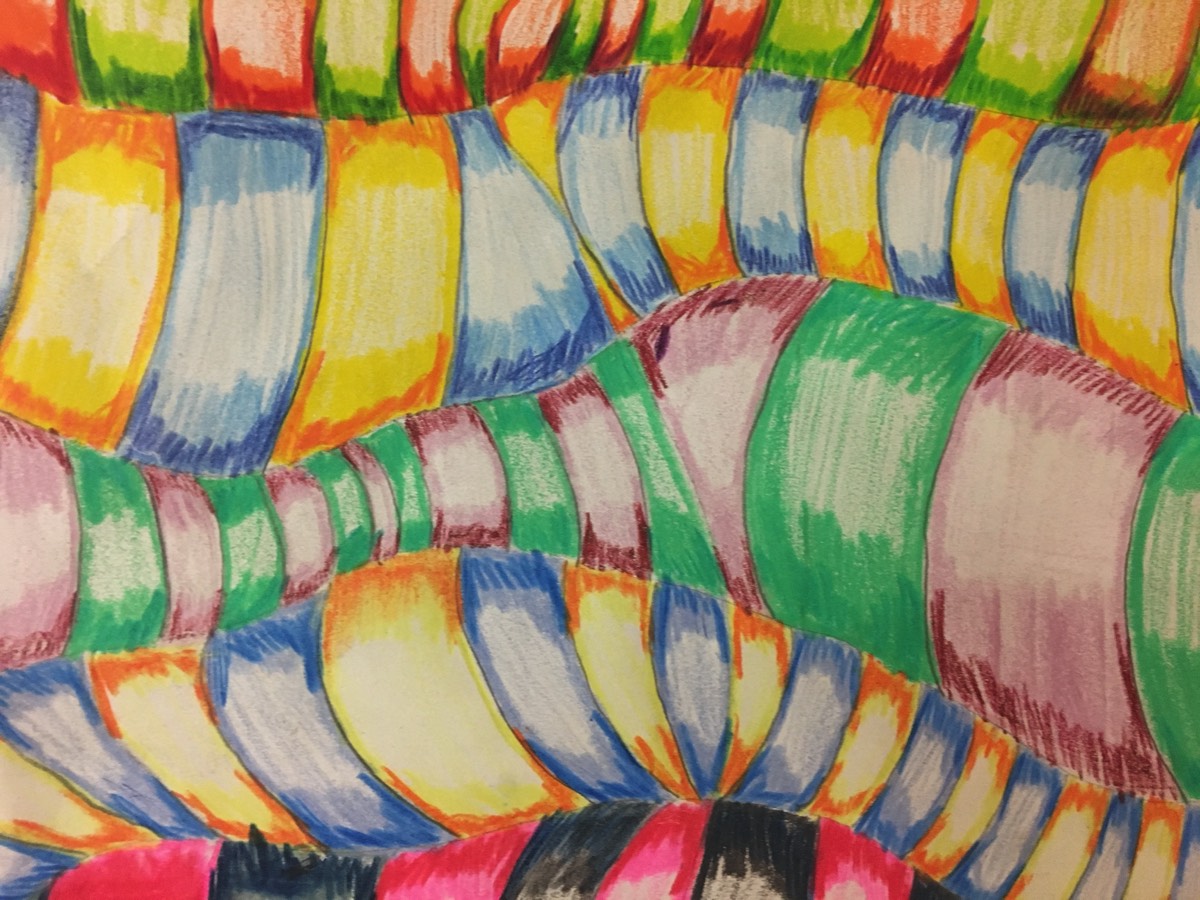Club Team Roster

Project Description:
The worm project combines design elements and color to create an optical illusion. Color pencil techniques will be explained and demonstrated for the students before the project begins.
LearningTargets:
The student will:
- Identify and create artwork based on the elements of art and on the principles of art.
- Demonstrate through their artwork how to use the elements of art to show movement and express feelings.
- Recognize, compare and use different media to create their artwork.
- Develop a respect and appreciation for the artwork of artists, including classmates' art.
- Recognize and compare differences in several art mediums.
- Create representational and abstract art.
- Learn to create proper shading and blending.
- Communicate thoughts, feelings and experiences to others through art.
- Understand terms that are basic to art media, procedures and techniques, as well as art appreciation.
- Maintain a sketchbook for a variety of drawing assignments to perfect their hand-eye ability and drawing skill.
Enduring Understandings:
6th Grade students will develop an understanding of how generating ideas and planning can lead to expressive creations. Students will also have a better understanding of how color theory influences artists. Artists will communicate meaning through the visual arts.
Essential Questions:
What is blending?
What is composition?
How do I draw a still life?
What are the elements and principles of design?
Rubric:
Rubrics have become popular with teachers as a means of communicating expectations for an assignment, providing focused feedback on works in progress, and grading final products. A rubric is a document that articulates the expectations for an assignment by listing the criteria, or what counts, and describing levels of quality from excellent to poor.
Rubrics are often used to grade student work but they can serve another, more important, role as well: Rubrics can teach as well as evaluate. When used as part of a formative, student-centered approach to assessment, rubrics have the potential to help students develop understanding and skill, as well as make dependable judgments about the quality of their own work. Students should be able to use rubrics in many of the same ways that teachers use them—to clarify the standards for a quality performance, and to guide ongoing feedback about progress toward those standards.
The rubric for the worm project can be viewed, downloaded and printed below. Enjoy
Artist : Victor Vasarely
Victor Vasarely initially studied medicine but soon abandoned the field to take up painting at the Podolini-Volkmann Academy in Budapest. There, he studied with Sandor Bortniky, through which Vasarely learned about the functional artistic style taught to students at the Bauhaus art school in Germany. It was one of a variety of styles that would influence Vasarely before he became the patriarch of Op Art, an abstract form of art featuring geometric patterns, bright colors and spatial trickery.
Blending Color Pencils

Blending Techniques

Handouts

Project Demonstration
Student Work











